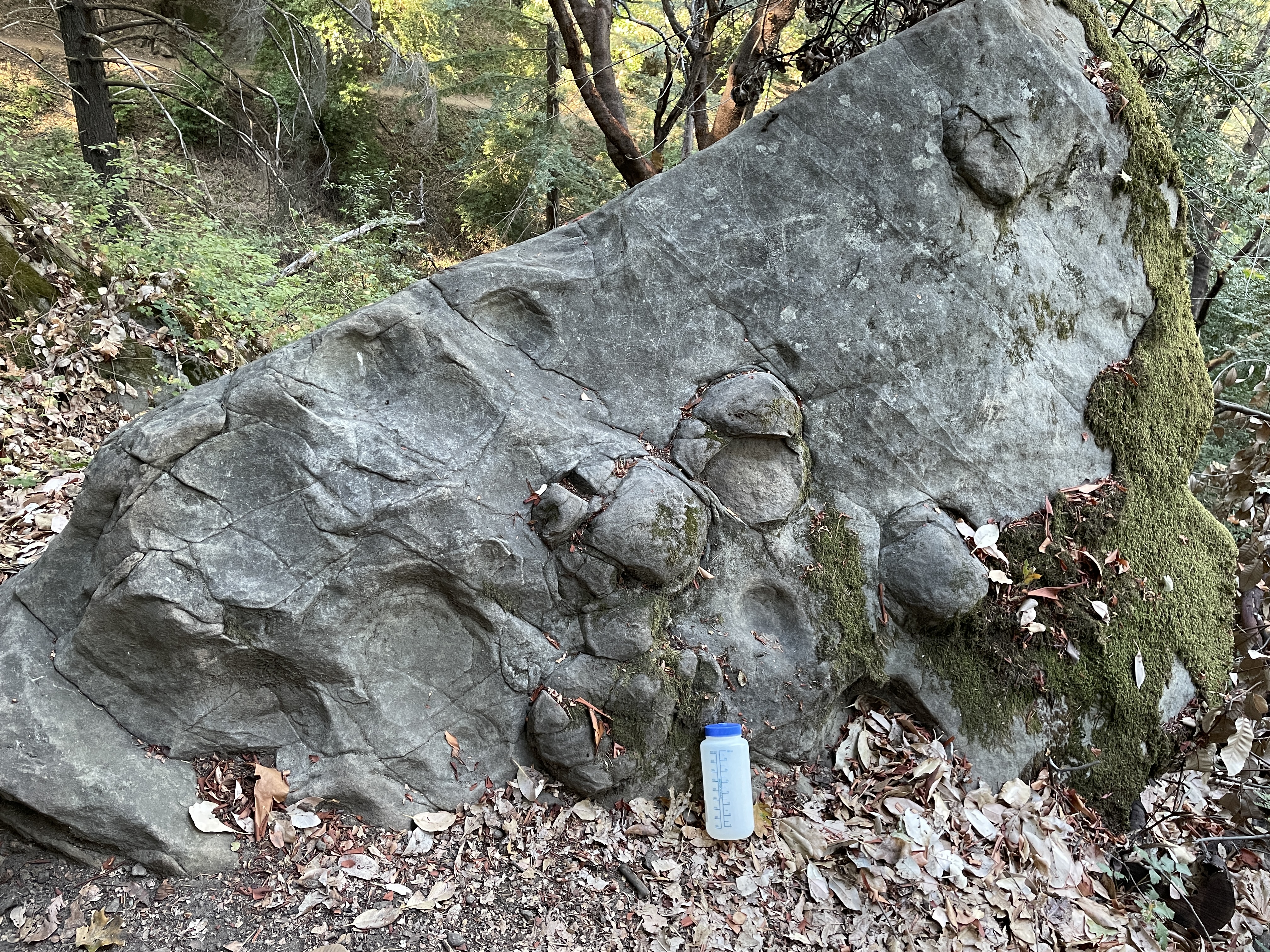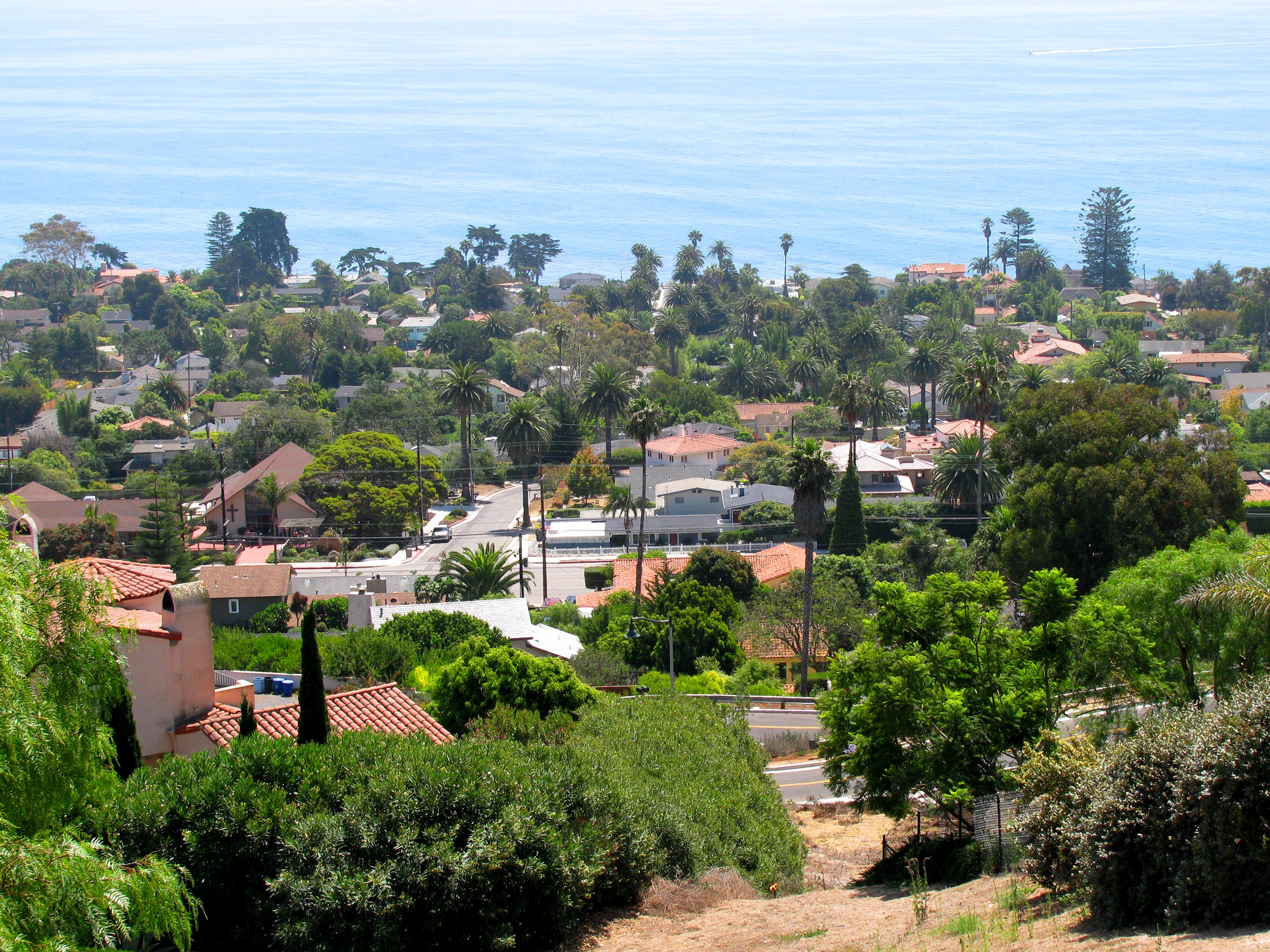|
Summerland Oil Field
The Summerland Oil Field (and Summerland Offshore Oil Field) is an inactive oil field in Santa Barbara County, California, about four miles (6 km) east of the city of Santa Barbara, within and next to the unincorporated community of Summerland. First developed in the 1890s, and richly productive in the early 20th century, the Summerland Oil Field was the location of the world's first offshore oil wells, drilled from piers in 1896. This field, which was the first significant field to be developed in Santa Barbara County, produced 3.18 million of barrels of oil during its 50-year lifespan, finally being abandoned in 1939-40. Another nearby oil field entirely offshore, discovered in 1957 and named the Summerland Offshore Oil Field, produced from two drilling platforms in the Santa Barbara Channel before being abandoned in 1996. Setting The formerly productive region of the Summerland Oil Field is on the coast of southern Santa Barbara County, about four miles (6 km) eas ... [...More Info...] [...Related Items...] OR: [Wikipedia] [Google] [Baidu] |
Vaqueros Sandstone
The Vaqueros Formation is a sedimentary geologic unit primarily of Upper Oligocene and Lower Miocene age, which is widespread on the California coast and coastal ranges in approximately the southern half of the state. It is predominantly a medium-grained sandstone unit, deposited in a shallow marine environment. Because of its high porosity and nearness to petroleum source rocks, in many places it is an oil-bearing unit, wherever it has been configured into structural or stratigraphic traps by folding and faulting. Being resistant to erosion, it forms dramatic outcrops in the coastal mountains. Its color ranges from grayish-green to light gray when freshly broken, and it weathers to a light brown or buff color. Type locality and deposition environment The type locality of the Vaqueros is from Vaqueros Canyon in the Santa Lucia Mountains, about eight miles southwest of Greenfield. The formation was first described by Homer Hamlin in 1904, as part of a report on the water r ... [...More Info...] [...Related Items...] OR: [Wikipedia] [Google] [Baidu] |
Mesa Oil Field
The Mesa Oil Field is an abandoned oil field entirely within the city limits of Santa Barbara, California, in the United States. Discovered in 1929, it was quickly developed and quickly declined, as it proved to be but a relatively small accumulation of oil in a single geologic formation. While the field was active in the 1930s, residential development in most of the Mesa neighborhood of Santa Barbara came to a halt. The field included two major productive areas with a total surface extent of only , and produced of oil during its brief lifetime. p. 95.Dolman, S.G. ''Mesa Oil Field: California Division of Oil and Gas, Summary of Operations''. 1938. Vol. 24 No. 2. p. 5-14. Available tp://ftp.consrv.ca.gov/pub/oil/Summary_of_Operations/1938/Vol24No2.pdf here Geographic setting The field occupied a small area on a mesa to the west of the Santa Barbara Harbor, within the limits of the City of Santa Barbara, now the location of the neighborhood known as "The Mesa". The mesa from whi ... [...More Info...] [...Related Items...] OR: [Wikipedia] [Google] [Baidu] |
Pumping Oil From The Sea - Oil Wells In The Surf Of Summerland, California, U
Pumping may refer to: * The operation of a pump, for moving a liquid from one location to another **The use of a breast pump for extraction of milk * Pumping (audio), a creative misuse of dynamic range compression * Pumping (computer systems), the number of times data is transmitted per clock cycle * Pumping (oil well), injecting chemicals into a wellbore * Pumping (noise reduction), an unwanted artifact of some noise reduction systems * Pumping lemma, in the theory of formal languages * Gastric lavage, cleaning the contents of the stomach * Optical pumping, in which light is used to raise electrons from a lower energy level to a higher one * Pump (skateboarding) {{single source, date=February 2019 Pumping is a skateboarding technique used to accelerate without the rider's feet leaving the board. Pumping can be done by turning or on a transition, like a ramp or quarter pipe.https://skateboarding.transwor ..., accelerating without pushing off of the ground * "Pumping" (My Hear ... [...More Info...] [...Related Items...] OR: [Wikipedia] [Google] [Baidu] |
Southern Pacific Railroad
The Southern Pacific (or Espee from the railroad initials- SP) was an American Class I railroad network that existed from 1865 to 1996 and operated largely in the Western United States. The system was operated by various companies under the names Southern Pacific Railroad, Southern Pacific Company and Southern Pacific Transportation Company. The original Southern Pacific began in 1865 as a land holding company. The last incarnation of the Southern Pacific, the Southern Pacific Transportation Company, was founded in 1969 and assumed control of the Southern Pacific system. The Southern Pacific Transportation Company was acquired in 1996 by the Union Pacific Corporation and merged with their Union Pacific Railroad. The Southern Pacific legacy founded hospitals in San Francisco, Tucson, and Houston. In the 1970s, it also founded a telecommunications network with a state-of-the-art microwave and fiber optic backbone. This telecommunications network became part of Sprint, a comp ... [...More Info...] [...Related Items...] OR: [Wikipedia] [Google] [Baidu] |
Spiritualism
Spiritualism is the metaphysical school of thought opposing physicalism and also is the category of all spiritual beliefs/views (in monism and Mind-body dualism, dualism) from ancient to modern. In the long nineteenth century, Spiritualism (when not lowercase) became most known as a social Religion, religious Social movement, movement according to which the laws of nature and of God include "the continuity of consciousness after the transition of death" and "the possibility of communication between those living on Earth and those who have made the transition". The afterlife, or the "Spirit world (Spiritualism), spirit world", is seen by spiritualists not as a static place, but as one in which spirits continue to evolve. These two beliefs—that contact with spirits is possible, and that spirits are more advanced than humans—lead spiritualists to a third belief: that spirits are capable of providing useful insight regarding morality, moral and ethical issues, as well as about ... [...More Info...] [...Related Items...] OR: [Wikipedia] [Google] [Baidu] |
Asphalt
Asphalt, also known as bitumen (, ), is a sticky, black, highly viscous liquid or semi-solid form of petroleum. It may be found in natural deposits or may be a refined product, and is classed as a pitch. Before the 20th century, the term asphaltum was also used. Full text at Internet Archive (archive.org) The word is derived from the Ancient Greek ἄσφαλτος ''ásphaltos''. The largest natural deposit of asphalt in the world, estimated to contain 10 million tons, is the Pitch Lake located in La Brea in southwest Trinidad ( Antilles island located on the northeastern coast of Venezuela), within the Siparia Regional Corporation. The primary use (70%) of asphalt is in road construction, where it is used as the glue or binder mixed with aggregate particles to create asphalt concrete. Its other main uses are for bituminous waterproofing products, including production of roofing felt and for sealing flat roofs. In material sciences and engineering, the terms "asphal ... [...More Info...] [...Related Items...] OR: [Wikipedia] [Google] [Baidu] |
API Gravity
The American Petroleum Institute gravity, or API gravity, is a measure of how heavy or light a petroleum liquid is compared to water: if its API gravity is greater than 10, it is lighter and floats on water; if less than 10, it is heavier and sinks. API gravity is thus an inverse measure of a petroleum liquid's density relative to that of water (also known as specific gravity). It is used to compare densities of petroleum liquids. For example, if one petroleum liquid is less dense than another, it has a greater API gravity. Although API gravity is mathematically a dimensionless quantity (see the formula below), it is referred to as being in 'degrees'. API gravity is graduated in degrees on a hydrometer instrument. API gravity values of most petroleum liquids fall between 10 and 70 degrees. In 1916, the U.S. National Bureau of Standards accepted the Baumé scale, which had been developed in France in 1768, as the U.S. standard for measuring the specific gravity of liquids less d ... [...More Info...] [...Related Items...] OR: [Wikipedia] [Google] [Baidu] |
Tomol
A ''tomol'' or ''tomolo'' (Chumash) or ''te'aat'' or ''ti'at'' (Tongva/Kizh) are plank-built boats, historically and currently in the Santa Barbara and Los Angeles area. They replaced or supplemented tule reed boats. The boats were between in length and in width. The Chumash refer to the ''tomol'' as the "House of the Sea" for their reliability. Double-bladed kayak-like paddles are used to propel the boat through the ocean. Some sources suggest the boats may have origins at Catalina Island and have been in use for thousands of years. The ''tomol'' has been described as "the single most technologically complex watercraft built in North America" and as being unique to "the New World." The boats are still constructed by Chumash, Tongva/Kizh, and Acjachemen people today. Construction ''Tomols'' were preferably built out of redwood that had drifted down the coast. When supplies of redwood were lacking, local native pine was used. When splitting the wood with whalebone or antler ... [...More Info...] [...Related Items...] OR: [Wikipedia] [Google] [Baidu] |
Chumash Indians
The Chumash are a Native American people of the central and southern coastal regions of California, in portions of what is now San Luis Obispo, Santa Barbara, Ventura and Los Angeles counties, extending from Morro Bay in the north to Malibu in the south. Their territory included three of the Channel Islands: Santa Cruz, Santa Rosa, and San Miguel; the smaller island of Anacapa was likely inhabited seasonally due to the lack of a consistent water source. Modern place names with Chumash origins include Malibu, Nipomo, Lompoc, Ojai, Pismo Beach, Point Mugu, Port Hueneme, Piru, Lake Castaic, Saticoy, Simi Valley and Somis. Archaeological research demonstrates that the Chumash people have deep roots in the Santa Barbara Channel area and lived along the southern California coast for millennia. History Prior to European contact (pre-1542) Indigenous peoples have lived along the California coast for at least 11,000 years. Sites of the Millingstone Horizon date from 7000 ... [...More Info...] [...Related Items...] OR: [Wikipedia] [Google] [Baidu] |






.png)

